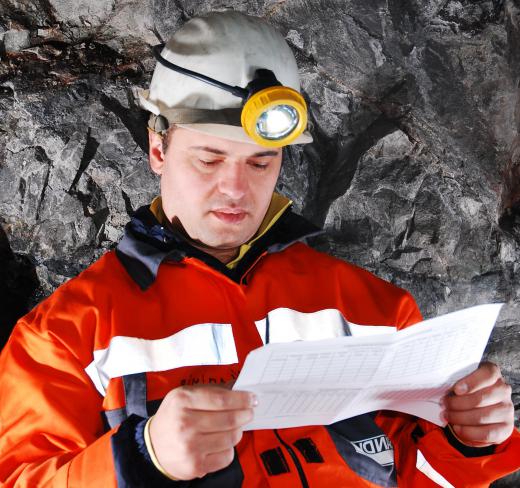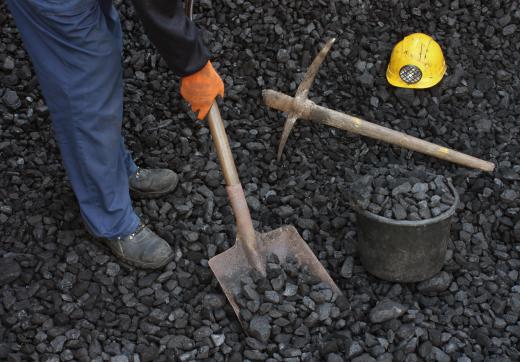A minecart is a small vehicle used to transport materials into or out of an underground mine. These carts often consist of wood or metal boxes mounted on steel wheels, though designs may vary by region and mining technique. Minecarts carry materials like iron ore, coal, or metals out of the ground for processing, and may also be used to remove dirt and other waste products. While minecarts in movies are often presented as out-of-control thrill rides, most minecarts actually operate on a very controlled path using engines or other mechanisms.
In many mines, the minecart travels on a set of rail tracks that are built into the ground. Workers rely on various types of engines to transport these cars along the rails, though some may be operated manually. Many utilize a locomotive-style engine that allows multiple minecart units to be linked together and pulled with ease. Others use a winch or hoisting system, or even a cable system likes those used to move workers on a mantrip vehicle. Specialized minecart pushers can also be used to automatically transfer cars in or out of the mine.

The standard minecart features a hinged design that allows the base of the cart to rock back and forth. This allows workers to easily empty the car and send it back into the mine for refilling. Traditional box or rocker type carts feature this type of pivoting design, which allows users to manually dump the cart to either side. Gable minecarts feature a W-shaped design, which can make it easier to tip heavy loads.

Modern minecart makers often utilize a slightly different design style to make the unloading process even easier. One side of the cart may hinge open like a door to allow materials to be removed through that side. Others feature a bottom that drops out, or a back door that can be opened during unloading.
To maximize the mining productivity, many mines feature a circular track style, which allows minecarts to travel into the mine while others are circling back out on the same set of tracks. Compared to mechanized mining devices, minecarts are inexpensive and fairly simple to operate. Despite their simplicity, the weight of materials in a minecart can make them extremely heavy, and put extra burden on miners who have to empty the carts. Since many of these carts are relatively small, they are also fairly limited in the amount of material they can transport during each load.
